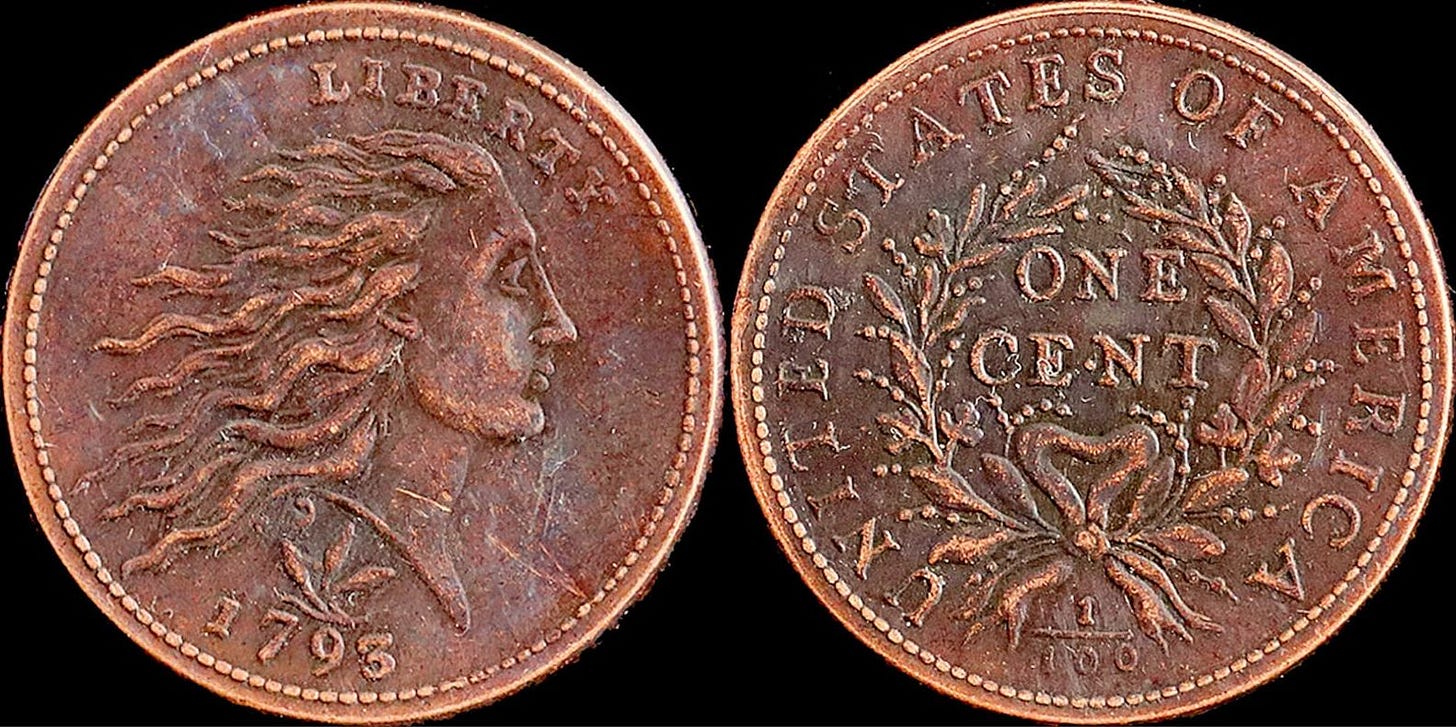And you'll find your fortune falling all over town
It'll be pennies from Heaven
Pennies from Heaven
The pennies from Heaven
For you and me.(Pennies from Heaven, 1936.)
The U.S. Mint estimates that it costs 3.7 cents to produce a penny. Trump 2.0 aims to end its production.
On this issue, we mostly agree. More on that later.
First, some history. The American penny was first minted in 1793. Initially made entirely of copper and the size of a modern-day half dollar, its design featured the word “Liberty” on the front and a wreath and identifying language on the back.
Later, yet still outside the range of living memory, the Indian Head cent was in circulation from 1859 to 1909.
Then, in 1909, to honor Abraham Lincoln’s 100th birthday, the penny was revamped to the design most of us are familiar with, featuring Lincoln’s portrait. This made it the first U.S. coin to bear the image of a real person.
Despite the penny’s storied history, the debate over its utility versus its production cost has persisted for decades. The penny remains in circulation in the U.S., even as Canada, New Zealand, and most eurozone countries—including Finland, where I live—have discontinued 1 cent and smaller denominations.
Recently, President Trump signed an executive order to cease penny production.
I'm not exceptionally sentimental, yet seeing the penny disappear may evoke nostalgia. It carries positive associations, from "lucky pennies" to adages like "A penny saved is a penny earned" or “A penny for your thoughts.”
As a kid, I saved pennies in a jar to open my first bank account at the Savings and Loan, where I received a paper bank book with a line item entry in exchange for my jar of coins. I'd love to say those few dollars compounded with interest into a fortune, but that account was cashed out long ago and was never worth much.
Growing up, I hunted for rare pennies, hoping to find a rare 1943-D or some other valuable mistake. Some minting errors—like rare vinyl pressings—were worth their weight in gold.
The Case Against the Penny
Ending penny production is perhaps one of the few inevitable things Trump is pushing forward. In most cases, he seems to oppose progress—whether it’s fighting against the acceptance of trans people, diversity in the workplace, relaxing immigration rules, legislating corporate responsibility, or mandating green initiatives. Common sense suggests Trump’s opposition to these movements signals that he knows he will eventually lose. But, you know, politics.
Why bother to fight something that doesn’t have power? Politicians resist change for political, economic, or psychological incentives. In Trump’s case, he pleases his base. But as far as the penny goes, I guess it’s not such a huge issue.
Consider Mahatma Gandhi’s famous assertion: "First they ignore you, then they laugh at you, then they fight you, then you win."
Phasing out the penny makes economic sense. Why produce a coin that costs more to manufacture than it's worth? As Elon Musk might say, the "idiot index" of penny production is sky-high. (The finished product has a value far less than the sum of its raw materials and the labor that went into making it.)
The Logistics of Eliminating the Penny
Phasing out the penny isn’t as complicated as it might seem. I live in Finland, a country that eliminated the penny years ago. But in Finland, as in much of Europe, cash is also disappearing. Using a bank card to pay for purchases under one euro is common, whereas, in the U.S., many merchants still impose a $10 minimum for card transactions, requiring cash for smaller amounts. I can't remember the last time I withdrew money from an ATM, and I haven’t carried coins in years.
Of course, eliminating cash creates minor inconveniences—like when Tooth Fairy duties roll around. That still requires cash, so sometimes I slip a U.S. ten- or twenty-dollar bill under the pillow. You know, inflation.
Rounding Up: The Inflation Fear
The simplest solution to eliminating the penny is rounding transactions to the nearest five cents. Critics argue this will cause inflation, especially for marketing strategies where products priced at 99 cents would round up to a dollar. But does that psychological trick still work on us?
There’s no reason a product can’t remain 99 cents for card payments, so this is ultimately a debate about physical currency. The real solution might be for the U.S. to go cash-free more quickly, eliminating the need for small denominations. That shift is already happening worldwide.
Like many issues, the solution seems simple, but the follow-through is complex. Still, this is an idea whose time has come.
After the penny goes, what’s next? Watch this CBS News video to explore the impact of eliminating the penny on the nickel, which already costs about 14 cents to manufacture. The plot thickens.





